The Charles R. Darwin Lifetime Achievement Award
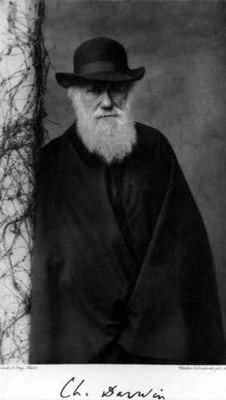
The Charles R. Darwin Lifetime Achievement Award was established in 1992 to recognize and honor distinguished senior members of the American Association of Biological (Physical) Anthropologists.
The Executive committee of the AABA invites the membership to submit names of nominees for this prestigious award. Nominees should have demonstrated a lifetime of contributions and commitment to Biological Anthropology through their scholarship, training, and service to the AABA.
Nomination Process
- Members are invited to submit a one-page nomination (in .doc, .docx, or .pdf) describing the nominee’s qualifications and contributions to biological anthropology and the American Association of Biological Anthropologists.
- Nominations must be accompanied by a completed Nomination Disclosure Form.
- Electronic submission is required and nominations should be e-mailed to the chair of the History and Honors Committee, Dr. Ashley Hammond
- All materials must be received no later than October 15, 2025.
- Rollover of Nominations: Nominations made in the previous year, but not awarded, will be considered by the Executive Committee for one additional year without requiring re-nomination. Nominators who wish to provide additional information should contact the Chair of the History and Honors Committee. Nominations made prior to the previous year must be resubmitted.
Evaluation Process. The AABA Executive Committee evaluates the nominees and makes the final decision. The committee may request a more detailed letter of nomination from the original nominator along with brief a curriculum vitae of the nominee. The awardee and the nominator are informed by the President in January prior to the annual meeting.
Award Process. The award is presented during the business meeting at the AABA annual meeting each year. The awardee will be introduced by the nominator (in the case of multiple nominations, a single nominator will be selected). All members including students are encouraged to attend the business meeting to join together in recognition of a distinguished senior member of the AABA.
2025
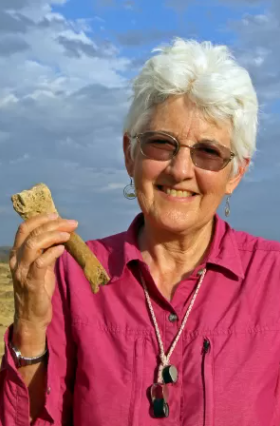 Kay Behrensmeyer, National Museum of Natural History. Dr. Behrensmeyer’s foundational work on the environments of fossil hominins, and the processes that led to their fossilization and preservation, have shaped the way that modern paleoanthropologists conduct their field research. Nomination materials emphasized Dr. Behrensmeyer’s trailblazing career, expansive mentorship, and outreach efforts.
Kay Behrensmeyer, National Museum of Natural History. Dr. Behrensmeyer’s foundational work on the environments of fossil hominins, and the processes that led to their fossilization and preservation, have shaped the way that modern paleoanthropologists conduct their field research. Nomination materials emphasized Dr. Behrensmeyer’s trailblazing career, expansive mentorship, and outreach efforts.
2024
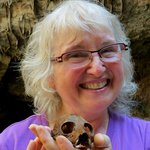 Laurie Godfrey, University of Massachusetts, Amherst. Dr. Godfrey has been a leader in the fields of primate evolution, paleobiology, and evolutionary ecology for over 40 years. As emphasized by her nomination, she has championed and advanced our understanding of the extinct ‘subfossil’ lemurs of Madagascar through dental microwear, isotopes, histology, ontology, computed tomography, scanning electron microscopy, ancient DNA, and many other methods. “With infectious enthusiasm she has inspired early career scholars and peers to study a diverse array of research topics in Madagascar and beyond.”
Laurie Godfrey, University of Massachusetts, Amherst. Dr. Godfrey has been a leader in the fields of primate evolution, paleobiology, and evolutionary ecology for over 40 years. As emphasized by her nomination, she has championed and advanced our understanding of the extinct ‘subfossil’ lemurs of Madagascar through dental microwear, isotopes, histology, ontology, computed tomography, scanning electron microscopy, ancient DNA, and many other methods. “With infectious enthusiasm she has inspired early career scholars and peers to study a diverse array of research topics in Madagascar and beyond.”
2023
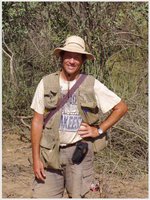 John Fleagle, Stony Brook University. Nomination materials emphasized the enormous array of topics that Dr. Fleagle has investigated over the last 50 years, including primate evolution, primate locomotion, and broad patterns of evolution and adaptation across many taxa. Other major impacts on our field include mentorship and student training, his remarkable textbook, Primate Adaptation and Evolution, and the founding and editorship of Evolutionary Anthropology.
John Fleagle, Stony Brook University. Nomination materials emphasized the enormous array of topics that Dr. Fleagle has investigated over the last 50 years, including primate evolution, primate locomotion, and broad patterns of evolution and adaptation across many taxa. Other major impacts on our field include mentorship and student training, his remarkable textbook, Primate Adaptation and Evolution, and the founding and editorship of Evolutionary Anthropology.
2022
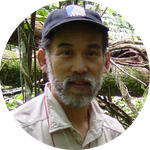 John Mitani, University of Michigan, Ann Arbor. Dr. Mitani’s research concentrates on understanding the behavior of living apes. He has conducted research on gibbons, siamangs, orangutans, gorillas, bonobos and chimpanzees, a rare accomplishment. His research has consistently provided new and provocative findings about the biology and behavior of these taxa, while contributing key insights into human evolution and adaptation.
John Mitani, University of Michigan, Ann Arbor. Dr. Mitani’s research concentrates on understanding the behavior of living apes. He has conducted research on gibbons, siamangs, orangutans, gorillas, bonobos and chimpanzees, a rare accomplishment. His research has consistently provided new and provocative findings about the biology and behavior of these taxa, while contributing key insights into human evolution and adaptation.
2021
 Leslie Aiello, University College London, and the Wenner-Gren Foundation for Anthropological Research. Over her more than 50-year career, Leslie’s academic interests have focused on the evolution of human adaptation and the broader issues of evolutionary theory, life history, energetics, and the evolution of the brain and cognition. Her major publications include An Introduction to Human Evolutionary Anatomy (with Christopher Dean) and The Expensive Tissue Hypothesis (with Peter Wheeler—Current Anthropology 1995).
Leslie Aiello, University College London, and the Wenner-Gren Foundation for Anthropological Research. Over her more than 50-year career, Leslie’s academic interests have focused on the evolution of human adaptation and the broader issues of evolutionary theory, life history, energetics, and the evolution of the brain and cognition. Her major publications include An Introduction to Human Evolutionary Anatomy (with Christopher Dean) and The Expensive Tissue Hypothesis (with Peter Wheeler—Current Anthropology 1995).
2020
 Fatimah Jackson, Howard University. Grounded in an emerging molecular anthropology, Dr. Jackson’s earliest work focused on the ways in which molecular evidence can reveal and retrace complex patterns of ancestry, with a particular focus on African diasporic populations in which historical documentation is often absent. Through this line of research, Dr. Jackson has provided a critical gaze on anthropology’s own history of “race science” and classification. As Dr. Jackson’s career continued to develop, she has brought her keen perspective on issues related to the co-variants of health and chronic disease.
Fatimah Jackson, Howard University. Grounded in an emerging molecular anthropology, Dr. Jackson’s earliest work focused on the ways in which molecular evidence can reveal and retrace complex patterns of ancestry, with a particular focus on African diasporic populations in which historical documentation is often absent. Through this line of research, Dr. Jackson has provided a critical gaze on anthropology’s own history of “race science” and classification. As Dr. Jackson’s career continued to develop, she has brought her keen perspective on issues related to the co-variants of health and chronic disease.
2019
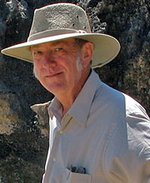 Matt Cartmill, Boston University. Matt Cartmill has published more than a hundred scholarly and popular works on the evolution of people and other animals and on the history and philosophy of evolutionary biology. Well known for his revolutionary analyses of the origins and early evolution of the ancestral primates, he has also made innovative contributions to scientific thinking about the origins and relationships of higher primates, prosimian anatomy, early hominin adaptations, quadrupedal locomotion, cranial evolution, and the philosophy of science.
Matt Cartmill, Boston University. Matt Cartmill has published more than a hundred scholarly and popular works on the evolution of people and other animals and on the history and philosophy of evolutionary biology. Well known for his revolutionary analyses of the origins and early evolution of the ancestral primates, he has also made innovative contributions to scientific thinking about the origins and relationships of higher primates, prosimian anatomy, early hominin adaptations, quadrupedal locomotion, cranial evolution, and the philosophy of science.
2018
 Ken Weiss, Penn State University. The evolution of complex traits, genetics and evolutionary conceptual theory, history of evolutionary biology and bioethics as it relates to evolution and genetics in our society.
Ken Weiss, Penn State University. The evolution of complex traits, genetics and evolutionary conceptual theory, history of evolutionary biology and bioethics as it relates to evolution and genetics in our society.
2017
 Alan Walker, Pennsylvania State University. Human and primate evolution, evolutionary anatomy, behavioral inference from the fossil and taphonomic record.
Alan Walker, Pennsylvania State University. Human and primate evolution, evolutionary anatomy, behavioral inference from the fossil and taphonomic record.
2016
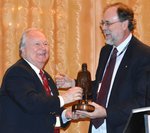 Michael Crawford, University of Kansas. Anthropological genetics, demography, molecular genetics, primate genetics, and genetics of twins
Michael Crawford, University of Kansas. Anthropological genetics, demography, molecular genetics, primate genetics, and genetics of twins
2015
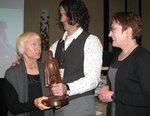 Phyllis Dolhinow, UC Berkeley. Biological anthropology, primate social behavior, ecology, development, human behavior and evolution
Phyllis Dolhinow, UC Berkeley. Biological anthropology, primate social behavior, ecology, development, human behavior and evolution
2014
 Russell Tuttle, The University of Chicago. Primate morphologist, and paleoanthropology
Russell Tuttle, The University of Chicago. Primate morphologist, and paleoanthropology
2013
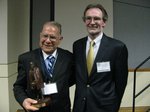 Roberto Frisancho, University of Michigan. Human adaptation to extreme environments such as high altitudes, growth, anthropometry and evaluation of nutritional status
Roberto Frisancho, University of Michigan. Human adaptation to extreme environments such as high altitudes, growth, anthropometry and evaluation of nutritional status
2012
 Clifford Jolly, New York University. Cliff ’s contributions to primate biology, behavior, ecology, and evolution have over his career helped define numerous aspects of the fields of primatology and animal behavior.
Clifford Jolly, New York University. Cliff ’s contributions to primate biology, behavior, ecology, and evolution have over his career helped define numerous aspects of the fields of primatology and animal behavior.
2011
Milford Wolpoff, University of Michigan. While lots of paleoanthropologists focus on a particular time period, taxon or body part, Milford’s strength is that he has worked on an astonishing array of topics from the very beginning of our evolution from Australopithecus, to the origin of Homo, middle Pleistocene Homo, Neandertals and the origin of modern humans.
2010
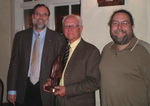 Bill Hylander, Duke University. Those of us who have had the pleasure and distinction of working with Bill have been infected with his intellectual curiosity and scientific rigor, particularly his willingness to employ novel techniques from other fields of inquiry. Through his role as the interim director of the Duke Primate Center, we owe him a debt of gratitude for helping preserve this unique institution long critical to our understanding of the behavior, ecology, conservation, and evolution of strepsirrhine primates.
Bill Hylander, Duke University. Those of us who have had the pleasure and distinction of working with Bill have been infected with his intellectual curiosity and scientific rigor, particularly his willingness to employ novel techniques from other fields of inquiry. Through his role as the interim director of the Duke Primate Center, we owe him a debt of gratitude for helping preserve this unique institution long critical to our understanding of the behavior, ecology, conservation, and evolution of strepsirrhine primates.
2009
George J. Armelagos, Emory University. George is a four-field anthropologist who has spent his life building elegant and compelling arguments in research areas that are Darwinian in approach and practical in application. The collective sum of all of his work highlights an original thinker who has dedicated himself to his craft and to his students.
2008
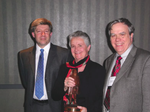 Jane E. Buikstra, Arizona State University. Buikstra has made major contributions in paleopathology, forensic anthropology and more generally within biological anthropology and archaeology.
Jane E. Buikstra, Arizona State University. Buikstra has made major contributions in paleopathology, forensic anthropology and more generally within biological anthropology and archaeology.
2007
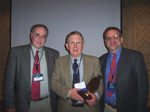 Michael Little, Binghamton University. Early in his career, Little began making major contributions to the study of pastoral societies using ecological and evolutionary principles. Little has been a major participant in and has had a major impact on international science programs over the past 40 years, including the International Biological Program (IBP) and the Man and the Biosphere Program (MAB).
Michael Little, Binghamton University. Early in his career, Little began making major contributions to the study of pastoral societies using ecological and evolutionary principles. Little has been a major participant in and has had a major impact on international science programs over the past 40 years, including the International Biological Program (IBP) and the Man and the Biosphere Program (MAB).
2006
C. Loring Brace, University of Michigan. Brace is a prolific scholar who has authored an enormous number of books, peer-reviewed articles, and other contributions. He is also a favored presenter at professional meetings who frequently salts his talks with limericks written by his alter ego – I.Wright Drivell.
2005
Eugene Giles, University of Illinois, Urbana-Champaign. From his earliest publications, Gene has been at the cutting edge of key developments in, or affecting, biological anthropology. Gene’s breadth and depth in biological anthropology, his eclectic skills and interests, reveal him to be a generalist, one of a kind that we may never see again.
2004
Robert R. Sokal, Stony Brook University. Bob’s vita is exceptionally impressive. He has published over 200 papers and has also co-authored three very influential books: Biometry, Principles of Numerical Taxonomy, and Numerical Taxonomy. Bob’s research has spanned a wide range of topics and organisms. He has written on subjects ranging from the genetics of insecticide resistance to the ecological genetics of houseflies. He is perhaps best known for his many works on numerical taxonomy, a field he co-developed with Peter Sneath.
2003
Francis E. (Frank) Johnston, University of Pennslyvania. Turning to just one of his intellectual contributions, Frank developed a focus on biocultural interrelations that formed the basic theoretical orientation for his work and that of many of his students and of his colleagues. Over the next decade, the biocultural approach became one of the most important and well-used approaches in growth and development, demography, genetics, paleopathology, and so many other areas that one can hardly examine our journal without findings articles relating some aspect of biology to some aspect of the social or cultural characteristics of a population.
2002
Morris Goodman, Wayne State University. Through his decades of research in molecular anthropology, Morris has played a central role in reordering our view of the topology of primate evolution. In doing so, he has demonstrated the variable rates of molecular evolution among primate lineages, key among which is the trend to a slowing rate of molecular change in the anthropoids, especially the lineages leading to humans and African apes.
2001
Charles Oxnard. Charles Oxnard has placed his unique stamp on just about every aspect of our discipline across the entire second half of the 20th century and all around the world, beginning in England and moving westward through North America to Asia and Australia. His research accomplishments have been almost as global as his residence patterns. A glance at his long bibliography shows an amazingly diverse span of subject matter, including comparative anatomy, growth and development, bone biology, vitamin metabolism, and the patterns and causes of sexual dimorphism. But when we think of his work as a whole, what comes to the forefront is his morphometric work—his lifelong quest for finding ways of taking huge numbers of data or complicated shapes, and crunching them into simpler functions that reveal a small number of underlying patterns reflecting diet, or locomotor behavior, or phylogeny. And most of us think immediately of all the books and papers in which Charles has applied these approaches to the study of primate and human evolution.
2000
Elwyn Simons. Elwyn Simons began his career as a general vertebrate paleontologist, with a doctoral thesis on the Paleocene pantodonts. But he rapidly shifted the focus of his interest specifically into the primates, with a second thesis, under the distinguished direction of Wilfrid Le Gros Clark, on the Eocene primates of Europe. Since those days in the late 1950s he has gone on to become the most productive field paleoprimatologist of his generation, obtaining extraordinary fossil-finding achievements in Egypt, India, and Madagascar and other places. Through both discovery and analysis, no single individual has done more than Elwyn has to enlarge directly our knowledge of the primate evolutionary past; and his indirect contributions in this area, through the training and encouragement of others, have been equally vast.

